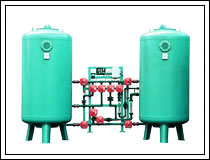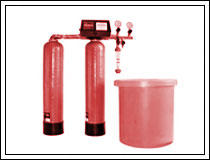Water Softening System
What is Water Softening?

We all have hard about hard water and their drawbacks. Water gets hard because of the presence of hardening ions like calcium, magnesium, and other ions. Presence of such ions leads to variety of undesired effects, right from interfering with the action of soaps to forming lime scales. The lime scale building by hard water is a major concern as it leads to foul plumbing and galvanic corrosion. The process of treating water of these hardening ions is known as water softening.
Sources of Hardness Minerals
Underground rocks and soils are rich in the minerals like calcium and magnesium, hence when water moves through soil and rocks, very small amounts of these minerals get dissolved in the water and makes it hard. Although, other ions are also responsible for enhancing the hardness of water but the major ions are that of Calcium and Magnesium. The hardness of the water increases with the increasing concentration of these ions, so any exposure of water to calcium and magnesium can enhance water hardness.
Affects of Hard Water
Hard water doesn't have any productive use; rather it interferes in all the cleaning activities like laundering, dishwashing, bathing and personal grooming. The lime scale produced by hard water can be observed as a thin film over glass shower doors, shower walls, bathtubs, sinks, faucets, pipes etc; often the water flow gets reduced because of such film deposition in pipes. Hairs washed in hard water feel sticky and look dull.
Water Softening Systems

Water is treated of these hardening salts in water softening systems. Softeners are used in these systems, which act as specific ion exchangers that remove ions with a multiple positive charge. Water softening units are permanently installed into the plumbing system to continuously remove calcium and magnesium. In these systems, water is passed through a media bed of sulfonated polystyrene beads supersaturated with sodium. When hard water passes through the softening material, ion exchange takes place. The hardening ions get attached to the resin beads of the bed while sodium on the resin beads is released simultaneously into the water. Eventually, when the resin becomes saturated with calcium and magnesium, it is recharged by passing a salt (brine) solution through the resin. The underlying phenomenon is that sodium replaces the calcium and magnesium which are discharged in the waste water. Hard water after getting treated in a water softening system is cleaned of its Ca and Mg ions and becomes rich in sodium ion. According to the Water Quality Association (WQA), the ion exchange softening process adds sodium at the rate of about 8 mg/liter for each grain of hardness removed per gallon of water.
|